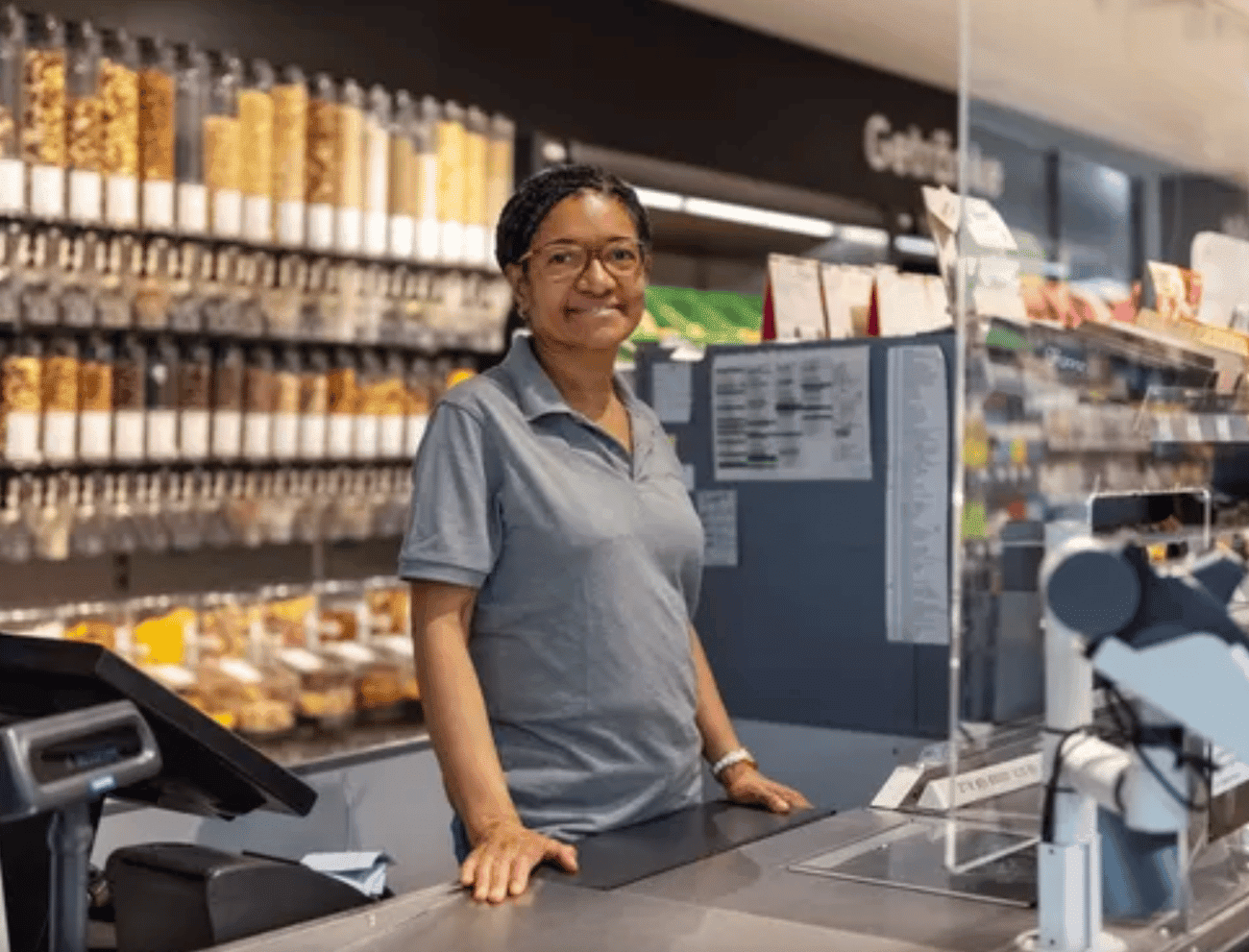Jobs
In low-wage jobs, working while Black means showing up sick | New Pittsburgh Courier

BECAUSE THEY WERE DEEMED ESSENTIAL WORKERS, grocery store clerks got paid sick leave—temporarily. Now, they’re forced to make a tough choice: work while they or a loved one are sick or lose a day’s pay. (Credit: MART PRODUCTION/Pexels)
by Jennifer Porter Gore
For New Pittsburgh Courier
Overview:
The states that mandated paid sick or family leave for hourly workers are in mostly-White states. Given that nearly 20 percent of low-wage workers are Black, that means they are disproportionately more likely to live in an area where they can’t care for themselves or their loved ones if they fall ill during the work week.
In 2020, at the height of the COVID-19 pandemic, Congress passed a temporary law that allowed employees, who are disproportionately Black and Latino, to claim up to two weeks of paid sick leave for pandemic-related illness. For the first time, low-wage workers had access to sick leave for themselves or to care for loved ones.
Eight years earlier, several states and the District of Columbia had enacted laws requiring employers to allow workers to earn paid sick time. However, the pandemic revealed how much the lack of paid sick days still affected thousands of hourly workers and many states and localities began offering some type of paid time off for illness.
But an economic analysis—coupled with the demographics of states that haven’t expanded sick leave to hourly workers—found that swaths of Black workers have to come to work even if they are sick.
“During the pandemic, workers and their families benefited when the government acted quickly to protect workers from the threat of COVID and the threat of economic insecurity,” according to the report from the Economic Policy Institute, a Washington think tank. Forcing people to come to work when they’re sick, the report states, is a public health hazard and harms the economy.
“Paid sick leave not only helps reduce transmission of disease, it also provides economic security for workers who might otherwise lose income if they have to take time off from work,” the report states. “Giving up on these protections, including support for employers to provide access to paid sick leave, hurts everyone.”
The changes have revealed yet another public-health inequity hidden in plain sight, according to Hilary Wething, the economist and researcher who wrote a report on the state of sick leave in the United States.
While about 14 percent of hourly-wage workers are people of color, “In 2022, 67 percent of Black workers [nationwide] had access to paid sick leave,” she says. “Black workers were more likely to have access to paid sick leave than Hispanic workers, but less likely than Asian and White, non-Hispanic workers.”
“This means that 1 in 3 Black workers still have to make an impossible choice between losing pay to stay home if they are sick or coming to work and risk infecting their coworkers and community.”
Residents in Missouri, Alaska, and Nebraska will be able to vote on paid sick leave initiatives during the upcoming elections but there’s no move at the federal level to do the same.
The Families First Coronavirus Response Act, a tax credit Congress passed in 2020, incentivized employers to provide sick leave for punch-clock employees, who typically don’t have it. The law was designed in part to help “essential workers”— grocery store clerks, hospitality workers and the like—who were crucial to keeping the economy functioning during lockdown.
The U.S. remains one of just nine countries that do not guarantee paid sick leave and it is the only developed country that doesn’t require employers to guarantee sick days. Private-sector workers do a bit better than low-wage workers with 78 percent of them having access to paid sick days, up from 63 percent in 2010. And 96 percent of private-sector workers with the highest wages have paid leave.
In an interview with KFF Health, Wething said the government used the COVID crisis as an opportunity.
“When the pandemic hit, we finally saw some real political will to solve the problem of not having federal paid sick leave,” she said.
Service-oriented jobs such as cashiers, nail technicians, home health aides, and fast-food workers–tend to be the low-paying jobs that often lack paid sick leave but require a heavy amount of personal interaction.
“So paid sick leave is about both protecting the public health of a community and providing the workers the economic security that they desperately need when they need to take time away from work,” Wething said.







:max_bytes(150000):strip_icc()/roundup-writereditor-loved-deals-tout-f5de51f85de145b2b1eb99cdb7b6cb84.jpg)


